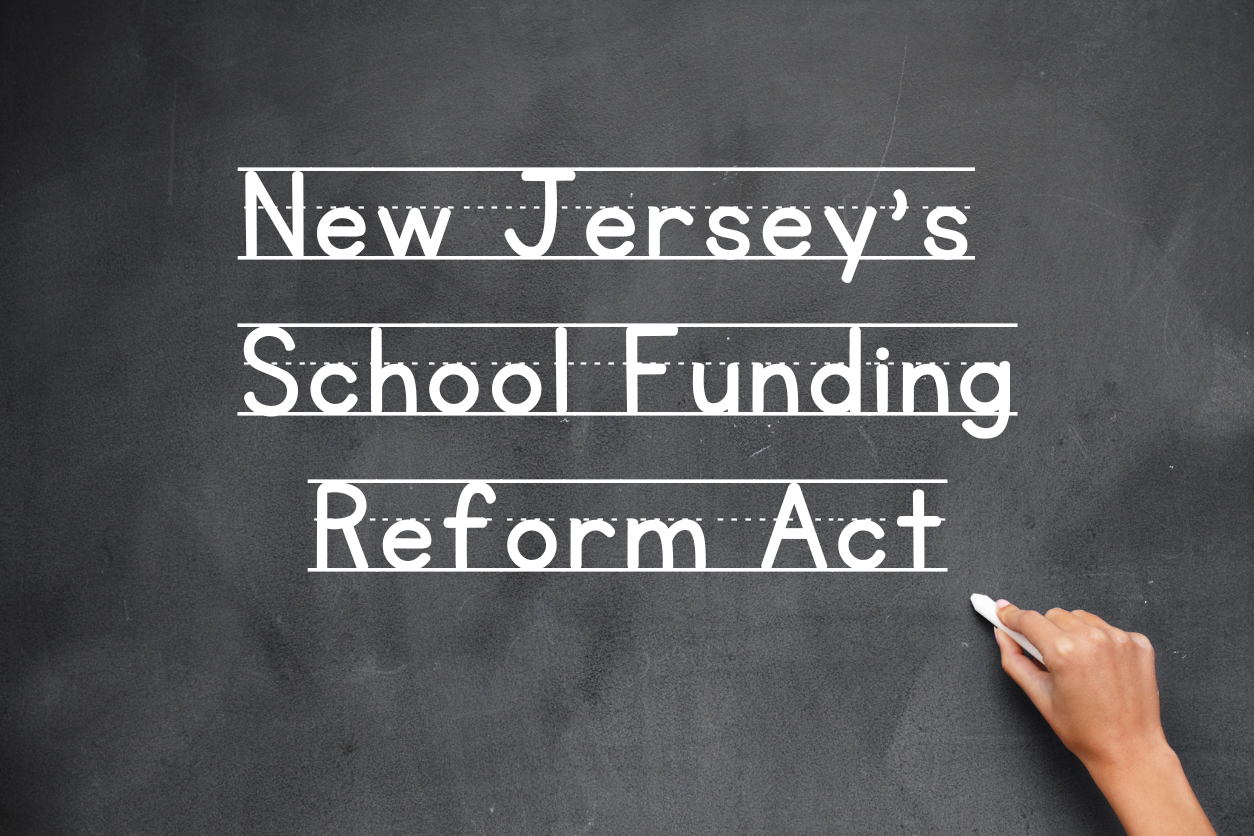
The 2018 Revision of New Jersey’s School Aid Formula and its Implications for District Finances and Student Achievement
In 2008, New Jersey enacted the School Reform Funding Act (SRFA) which was designed to create a new school funding formula to end a long cycle of failed legislative attempts to reduce school spending inequalities across the state’s school districts. Unfortunately, the SRFA created its own revenue inequalities, primarily with some New Jersey school districts receiving more state aid than what the government was required to provide, while others did not receive the required amount of state funding based on the new formula.
In 2018, Bill S-2 was signed to revise the SRFA and address the funding inequalities. This new project will provide systematic analysis of how these school formula changes following the 2017-2018 school year impacted the distribution of state aid across New Jersey school districts. The research will be obtained by using district-level data on financial and student achievement variables from the New Jersey Department of Education before and after the implementation of the S-2 bill.

Equity in NJ Public Schools
In a state like NJ where student experiences and outcomes are alarmingly unequal, it is important to generate understanding of the consequences of school segregation for students’ life outcomes. The NJ Policy Lab will partner with the Joseph C. Cornwall Center for Metropolitan Studies at Rutgers-Newark to investigate consequences of school segregation cohorts of high school freshmen in New Jersey.
This project will aim to present a nuanced picture of the potholes facing high school students of different backgrounds in different schools/districts as well as of the opportunities for avoiding them. Understanding how segregation directly affects student outcomes, how school conditions are affected by segregation and then affects student outcomes is a major expansion of the current knowledge base. This study will intentionally identify opportunities for improvement and closing gaps. Additionally, this project will conduct a broad and constructive public information campaign about these findings.

Financial Aid for Higher Education in NJ
Two new higher education grant programs, the Community College Opportunity Grant (CCOG) and the Garden State Guarantee (GSG), are making college more accessible and affordable to low-income New Jersey residents, limiting out-of-pocket costs and, thus, future debt.
This study, in a partnership with the Newark City of Learning Collaborative, will inform the rollout of financial aid programs in the state by exploring Newark families’ perceptions of the CCOG and GSG, barriers to access, and strategies to increase awareness and expand the impact of these grants.

Reengaging COVID-Disconnected College Students in Newark
In the aftermath of the COVID-19 pandemic, colleges and universities are pressed to re-evaluate their long- and short-term strategies for enrollment management and student support services. In New Jersey, postsecondary enrollment dropped 6.7% from the spring of 2021 to the spring of 2022, according to the National Student Clearinghouse Research Center. Newark experienced an even greater drop of 9% in undergraduate enrollment.
This qualitative study is exploring how institutions and communities in the city of Newark might reengage “COVID-disconnected” college students. This project is intended to better understand barriers to reenrollment and opportunities for support. It will also inform the “narrative gap” between dropout youth (as articulated in NJ Assembly Bill 398 which established the Office of Dropout Prevention and Reengagement of Out-of-School Youth and the Student Dropout Prevention Task Force) and the 18–26-year-olds who are not currently enrolled in college.

How Teacher Preparation Programs are Responding to Changes in State Assessment Policy
Teacher education in New Jersey is currently undergoing a major policy shift in how teacher performance assessments will be used to certify new starting teachers. This shift was motivated, in large part, over concerns regarding teacher shortages and the impact that the established assessment policies and practices were having in exacerbating this problem. This project will study, in real time, how teacher preparation institutions are responding to the new policy directions that will take effect in Fall 2023.

New Jersey Credential Attainment Goal, 65% by 2025
In 2017, the State of New Jersey launched the “65 by ’25: Many Paths to One Future Campaign,” pledging a goal that 65% of working-age residents would have some type of high quality post-secondary credential by 2025. As the state embarks on the final stretch of this attainment goal, the New Jersey State Policy Lab will be evaluating the progress toward this objective on behalf of the Office of the Secretary of Higher Education (OSHE).
With this research, the Policy Lab will evaluate the state’s current progress, taking societal contexts into consideration, review the most effective practices at increasing attainment, and provide recommendations for future considerations to build upon OSHE’s current work.

Using High School Science Course Pathways to Predict College Enrollment and Majoring in STEM Fields
Disparities in the breadth and availability of science courses within high schools can undermine the quality of the secondary school experience, often to the detriment of students who are a part of traditionally disadvantaged groups. This study is a continuation of a recent New Jersey State Policy Lab report, “Equal Access to Stem Pathways?” which examined high school science course enrollment trends in New Jersey using publicly available school-level data.
This new report will aim to identify and describe patterns in high school students taking science courses in New Jersey and study the value of these science course pathways and what influence this may play on college enrollment and students opting to major in STEM fields. Additionally, the study plans to determine and identify if there are any positive outliers, i.e., high schools with high percentages of students of color and/or economically disadvantaged students that do have a strong science course presence.
